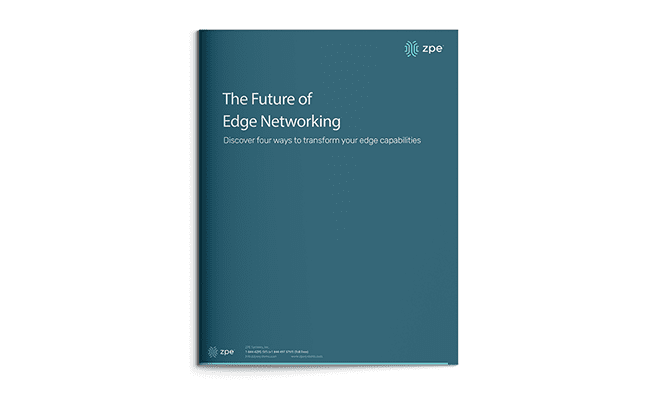
The edge of the network is where local area networks make their connections to the edge of the Internet and to wide-area networks. Thus, edge networking serves edge computing, which brings computation and storage resources closer to the locations where it’s needed to help improve response times and reduce long-haul bandwidth consumption and associated costs.
In other words, the edge includes systems that are close to endpoint devices on your networks, and where third-party services may interact with them. This includes such things as typical end-user devices (PCs, tablets, smartphones, and so on), as well as Internet of Things (IoT) devices (sensors, cameras, and so forth), self-service kiosks, mobile apps, POS systems, and other systems and services active in the so-called “last mile” of a network.
Understanding Edge Networking and Computing
Devices at the edge are different from networks at the edge. Devices at the edge attach to the outermost reaches of your networks so they can connect to and use apps, services, storage, and data as their needs dictate. Edge networks, on the other hand, describe the connections and tunnels that connect branch and remote office locations to each other, to your data centers, and to distributed cloud-based applications and services. Edge computing involves providing resources and services normally found at the network core (especially in a data center) closer to the network edge so that users can consume compute, storage, data, load balancing, and more quickly and efficiently. A good general way to describe such processing and its location is to call it all “edge networking.”
Learn more about the challenges of Edge Networking and some real-world examples in this 14 minute podcast.
How Out-of-Band Plays into Edge Networking
Various kinds of technologies can make critical remote infrastructure more reliable, resilient, and robust. This helps to keep that infrastructure running, and helps ensure a better experience to those who must rely upon it to be secure, available, and efficient. Such technologies include:
Analysts estimate that by 2023, over half of all data generated in enterprises will come from locations outside the data center or the cloud. That means from edge networking facilities of all kinds, close to the action. That’s where workers are working, devices are acquiring data, transactions get processed, and so forth and so on. How does out-of-band (usually abbreviated OOB) play into this situation and related management and control scenarios?
OOB provides a separate communications connection to the infrastructure that supports and controls edge networking. Historically, OOB connections have used slow, narrow-bandwidth connections via phone lines or similar technologies (X.25, ISDN, and so forth) to connect to devices, so they can be accessed, inspected, updated, repaired, restarted, and more. Nowadays, wireless links such as 4G and 5G, and wired long-haul networking technologies such as Metro and Carrier Ethernet offer higher bandwidth, more capability, and direct support for TCP/IP.
By design, OOB is separate and disjointed from production networks. It will often rely on separate interfaces and media (and even service providers) to provide a “way in” to key devices for management and control, even if (or when) production networks go down. OOB tools let IT professionals manage and troubleshoot edge networking devices even when they aren’t otherwise accessible. Then, they can be reset, repaired, updated, or simply restarted to put them (and the infrastructures they support, including compute, storage, and network resources) back to work quickly and easily.
Good OOB management tools and facilities also support automated monitoring and response, so that simple repairs and corrections may be applied without requiring human operators to get involved. This permits enterprises to monitor performance and respond quickly to slowdowns and outages that might otherwise affect user productivity, or impede key data flows. The same tools and capabilities also support improved security posture, with the ability to remediate or work around threats and vulnerabilities as they’re discovered.
In general, OOB management and control provide the tools and technologies needed to make the most out of edge networking and its compute, storage, and network capabilities. As more and more activity moves to edge networking environments, enterprises need to maximize their productivity and usability, provide the best performance and user experiences, and manage security and data protection. OOB offers the “right stuff” to do all these things both affordably and well.


